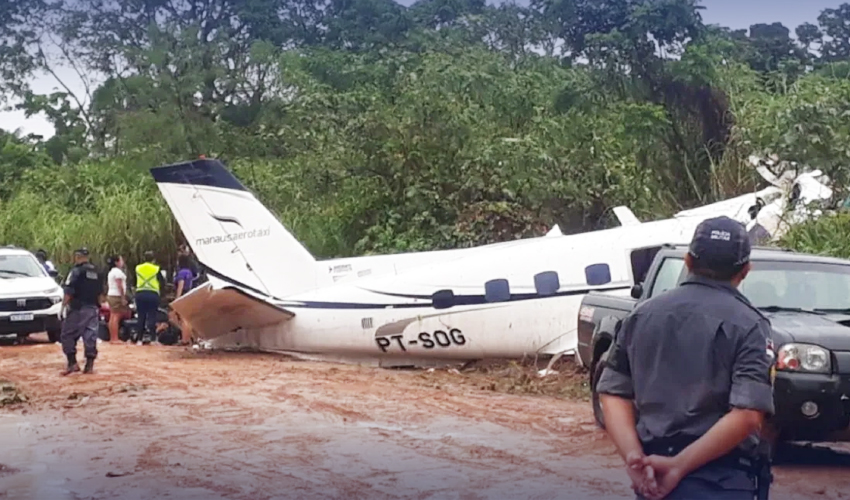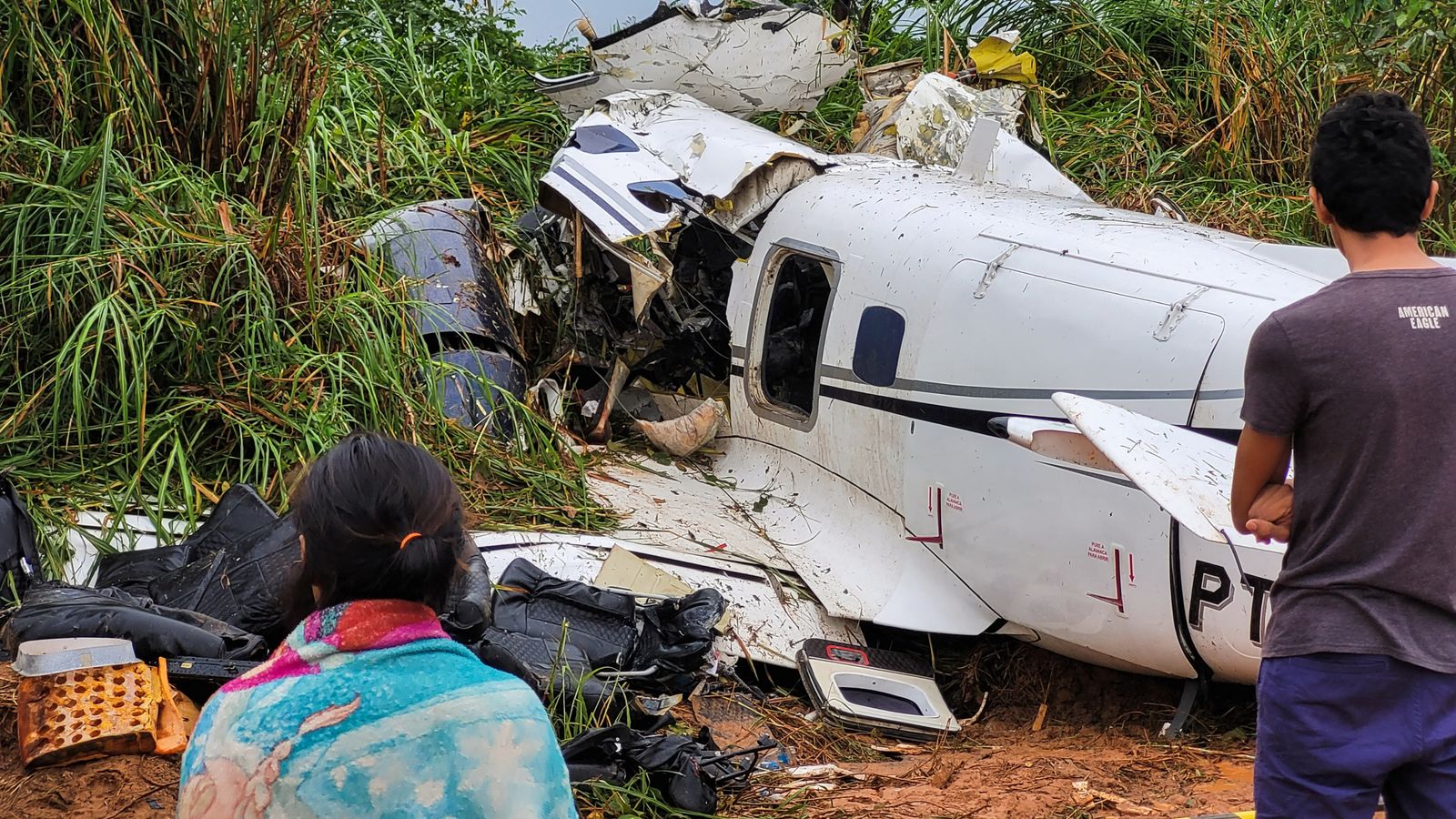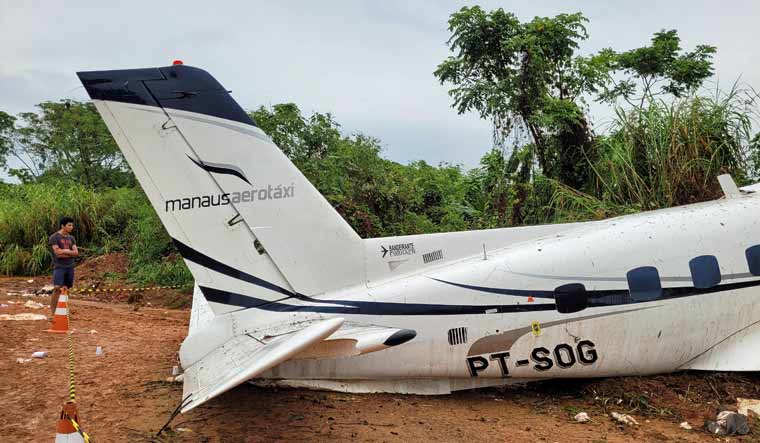History of Plane Crashes in Brazil: Brazil Plane Crash Type

Brazil, a nation with a vast and diverse geography, has unfortunately witnessed a significant number of plane crashes throughout its history. These incidents have left a lasting impact on the country’s aviation industry and public perception of air travel. This section delves into the timeline of notable plane crashes in Brazil, examining their impact and the subsequent investigations and safety recommendations.
Notable Plane Crashes in Brazil
This section provides a timeline of some of the most significant plane crashes in Brazil, including details of the aircraft type, number of casualties, and notable circumstances.
- 1946: Rio de Janeiro, Brazil – 24th June – Douglas C-47 Skytrain – 19 casualties – The aircraft, operated by Panair do Brasil, crashed shortly after takeoff from Santos Dumont Airport in Rio de Janeiro, killing all 19 passengers and crew members. The crash was attributed to a combination of factors, including a mechanical failure and the pilot’s decision to attempt a landing in poor weather conditions. This incident sparked a debate about the safety of air travel in Brazil and led to increased scrutiny of aviation regulations.
- 1961: Belém, Brazil – 14th February – Douglas DC-3 – 17 casualties – The DC-3, operated by Cruzeiro do Sul, crashed shortly after takeoff from Val de Cans International Airport in Belém, killing all 17 passengers and crew members. The crash was attributed to a mechanical failure in the aircraft’s engine. This incident highlighted the importance of regular aircraft maintenance and the need for strict adherence to safety protocols.
- 1973: Rio de Janeiro, Brazil – 26th July – VASP Boeing 737-200 – 126 casualties – The VASP Boeing 737-200, en route from Porto Alegre to Rio de Janeiro, crashed into a mountain near the city of Teresópolis, killing all 126 passengers and crew members. The crash was attributed to a combination of factors, including pilot error, poor weather conditions, and a lack of proper communication between the pilots and air traffic control. This incident prompted a comprehensive review of flight safety procedures in Brazil and led to the implementation of new regulations aimed at improving pilot training and communication protocols.
- 1989: São Paulo, Brazil – 18th August – Varig Boeing 737-200 – 53 casualties – The Varig Boeing 737-200, en route from Rio de Janeiro to São Paulo, crashed shortly after takeoff from Congonhas Airport in São Paulo, killing 53 passengers and crew members. The crash was attributed to a combination of factors, including pilot error, poor weather conditions, and a lack of proper communication between the pilots and air traffic control. This incident led to a significant overhaul of flight safety procedures at Congonhas Airport, including the implementation of new landing procedures and stricter safety regulations.
- 1996: São Paulo, Brazil – 31st October – TAM Airlines Fokker 100 – 99 casualties – The TAM Airlines Fokker 100, en route from Porto Alegre to São Paulo, crashed shortly after takeoff from Congonhas Airport in São Paulo, killing all 99 passengers and crew members. The crash was attributed to a combination of factors, including pilot error, poor weather conditions, and a lack of proper communication between the pilots and air traffic control. This incident prompted a comprehensive review of flight safety procedures at Congonhas Airport, including the implementation of new landing procedures and stricter safety regulations.
- 2006: São Paulo, Brazil – 17th July – TAM Airlines Airbus A320 – 199 casualties – The TAM Airlines Airbus A320, en route from Porto Alegre to São Paulo, overran the runway at Congonhas Airport in São Paulo, crashed into a fuel depot, and caught fire, killing all 189 passengers and crew members, as well as 10 people on the ground. The crash was attributed to a combination of factors, including pilot error, poor weather conditions, and a lack of proper communication between the pilots and air traffic control. This incident prompted a comprehensive review of flight safety procedures at Congonhas Airport, including the implementation of new landing procedures and stricter safety regulations.
- 2007: Manaus, Brazil – 25th September – Gol Airlines Boeing 737-800 – 154 casualties – The Gol Airlines Boeing 737-800, en route from Manaus to Rio de Janeiro, collided in mid-air with a private Embraer Legacy 600, killing all 154 passengers and crew members on board the Gol flight. The crash was attributed to a combination of factors, including pilot error, a lack of proper communication between the pilots and air traffic control, and the lack of a transponder on the Embraer Legacy 600. This incident prompted a comprehensive review of air traffic control procedures in Brazil and led to the implementation of new regulations aimed at improving communication protocols and the use of transponders.
- 2015: São Paulo, Brazil – 29th July – TransAsia Airways ATR 72-600 – 51 casualties – The TransAsia Airways ATR 72-600, en route from São Paulo to Porto Alegre, crashed shortly after takeoff from Congonhas Airport in São Paulo, killing all 51 passengers and crew members. The crash was attributed to a combination of factors, including pilot error, poor weather conditions, and a lack of proper communication between the pilots and air traffic control. This incident prompted a comprehensive review of flight safety procedures at Congonhas Airport, including the implementation of new landing procedures and stricter safety regulations.
Impact of Plane Crashes on the Brazilian Aviation Industry and Public Perception
Plane crashes in Brazil have had a profound impact on the country’s aviation industry and public perception of air travel. The incidents have led to increased scrutiny of aviation regulations, improved pilot training, and the implementation of new safety procedures. However, despite these efforts, the public remains concerned about the safety of air travel in Brazil.
“The aviation industry in Brazil has been marked by a series of tragic accidents, which have led to a high level of public concern about air safety. While significant strides have been made in improving safety standards, the public remains apprehensive about air travel.”
Major Investigations and Safety Recommendations, Brazil plane crash type
Following each major plane crash, Brazilian authorities have conducted thorough investigations to determine the cause of the accident and recommend measures to prevent similar incidents in the future. These investigations have often led to the implementation of new regulations, improved safety procedures, and increased scrutiny of aviation operations.
- CENIPA (Center for Investigation and Prevention of Aeronautical Accidents) – CENIPA is the Brazilian government agency responsible for investigating aviation accidents and incidents. CENIPA conducts thorough investigations into each incident, collecting evidence, analyzing data, and issuing reports with recommendations for improving aviation safety.
- Safety Recommendations – CENIPA’s investigations have led to a wide range of safety recommendations, including improvements to pilot training, flight procedures, air traffic control, and aircraft maintenance. These recommendations have been implemented by the Brazilian aviation authorities and have contributed to a significant improvement in aviation safety in Brazil.
Common Causes of Plane Crashes in Brazil

Brazil, a vast nation with a robust aviation industry, has unfortunately witnessed its share of plane crashes. While safety measures have significantly improved, understanding the common causes of these tragedies is crucial for continuous improvement and the prevention of future incidents. This section delves into the most frequent causes of plane crashes in Brazil, examining their contributing factors and highlighting specific incidents that underscore their significance.
Pilot Error
Pilot error remains a significant contributor to plane crashes globally, and Brazil is no exception. This category encompasses a wide range of human factors, including:
- Loss of situational awareness: This occurs when pilots fail to recognize or respond appropriately to changing conditions, leading to misjudgments and errors in decision-making. A notable example is the 2006 TAM Airlines Flight 3054 crash in São Paulo, where the pilot, facing heavy rain and low visibility, misjudged the runway and landed short, resulting in a catastrophic collision with a hangar.
- Improper aircraft handling: Pilots may make mistakes in aircraft control, leading to stalls, spins, or other aerodynamic issues. In 2007, a Gol Airlines Boeing 737-800 crashed into the Amazon rainforest due to a pilot’s failure to maintain proper altitude and airspeed during a descent.
- Fatigue: Pilot fatigue can significantly impair judgment and reaction time, increasing the risk of errors. In 2013, a Brazilian Air Force C-95 aircraft crashed in the state of Amazonas, killing all 11 crew members. Investigations revealed that pilot fatigue was a contributing factor.
- Inadequate training: Pilots who lack sufficient training or experience may struggle to handle complex situations or emergencies effectively. In 2015, a small aircraft crashed in the state of Pará, killing all four passengers and the pilot. The investigation concluded that the pilot’s lack of experience with the aircraft type was a contributing factor.
Mechanical Failure
Mechanical failures, although less frequent than pilot error, can also lead to catastrophic consequences. These failures can involve various aircraft systems, including:
- Engine failure: Engine malfunctions can result in loss of power, leading to an uncontrolled descent or forced landing. In 2014, a TAM Airlines Airbus A320 experienced an engine failure shortly after takeoff from São Paulo’s Congonhas Airport. The pilot managed to safely return to the airport and land the aircraft.
- Hydraulic system failure: Hydraulic systems are critical for controlling flight surfaces and braking. Failures in these systems can lead to loss of control and instability. In 2017, a Brazilian Air Force C-130 Hercules aircraft crashed in the state of Rio de Janeiro, killing all 11 crew members. An investigation revealed that a hydraulic system failure contributed to the accident.
- Structural failure: Fatigue cracks or other structural defects can compromise the aircraft’s integrity, leading to catastrophic failure in flight. In 2009, a small aircraft operated by a Brazilian air taxi service crashed in the state of Minas Gerais, killing all four passengers and the pilot. The investigation revealed that a structural failure in the aircraft’s wing was the cause of the crash.
Weather Conditions
Weather conditions can significantly impact aircraft safety, particularly in Brazil’s diverse climate.
- Turbulence: Severe turbulence can cause aircraft to lose altitude or control, leading to a crash. In 2010, a Gol Airlines Boeing 737-800 experienced severe turbulence during a flight from Rio de Janeiro to São Paulo. The aircraft was damaged, but the pilot managed to land safely.
- Thunderstorms: Thunderstorms can produce strong winds, heavy rain, and lightning, posing significant risks to aircraft. In 2015, a small aircraft crashed in the state of Mato Grosso do Sul during a thunderstorm. All four passengers and the pilot were killed.
- Low visibility: Fog, rain, and other weather conditions can reduce visibility, making it difficult for pilots to navigate and land safely. In 2016, a small aircraft crashed in the state of São Paulo during heavy fog. The pilot and two passengers were killed.
Terrorism
While terrorism is a relatively rare cause of plane crashes, it has occurred in Brazil. In 1989, a Varig Airlines Boeing 737-200 was hijacked and crashed in the state of Pará, killing all 137 passengers and crew members. The hijacking was carried out by a group of criminals seeking to escape from prison.
Impact of Plane Crashes on Brazilian Society

Plane crashes in Brazil, while thankfully not frequent, have a profound and lasting impact on the nation, leaving scars on the social fabric and the economic landscape. The loss of life, the disruption to transportation networks, and the emotional toll on families and communities paint a stark picture of the consequences of these tragedies.
Socio-Economic Consequences
The socio-economic consequences of plane crashes in Brazil are multifaceted and far-reaching. The loss of life is the most immediate and tragic impact. These crashes often claim the lives of individuals from various walks of life, leaving families devastated and communities in mourning. The economic impact extends beyond the immediate loss of life. The destruction of aircraft and infrastructure, such as airports and runways, can result in significant financial losses.
Brazil plane crash type – The aftermath of a Brazil plane crash can be incredibly traumatic, leaving survivors and families grappling with grief, loss, and a profound sense of disruption. It’s during these moments that we see the power of compassionate reporting, exemplified by the work of David Muir , who has dedicated his career to informing the public about critical events with sensitivity and respect.
Understanding the impact of such tragedies, and the role of responsible journalism in navigating them, is essential for healing and moving forward.
The aftermath of a tragedy like a Brazil plane crash can be overwhelming, leaving individuals grappling with a sense of loss and uncertainty. It’s important to remember that even in the face of such devastating events, resilience is possible.
The story of tropical storm Debby hurricane serves as a powerful reminder that communities can come together to rebuild and heal. Similarly, in the aftermath of a Brazil plane crash, seeking support from loved ones, professionals, and community resources can help individuals navigate their grief and find a path towards healing.
